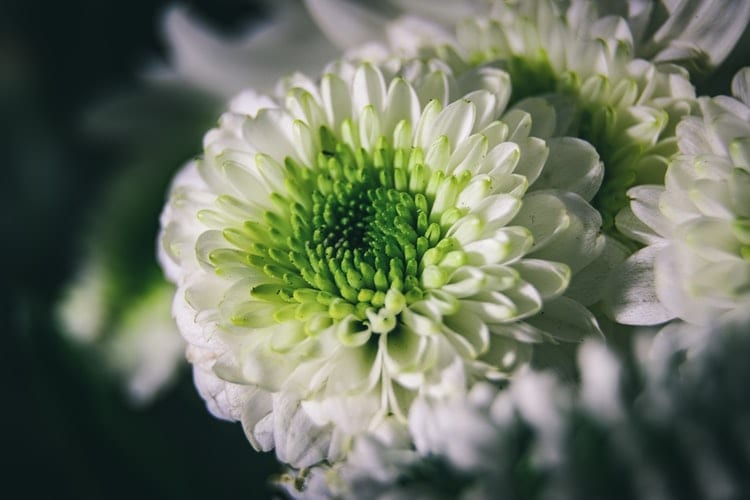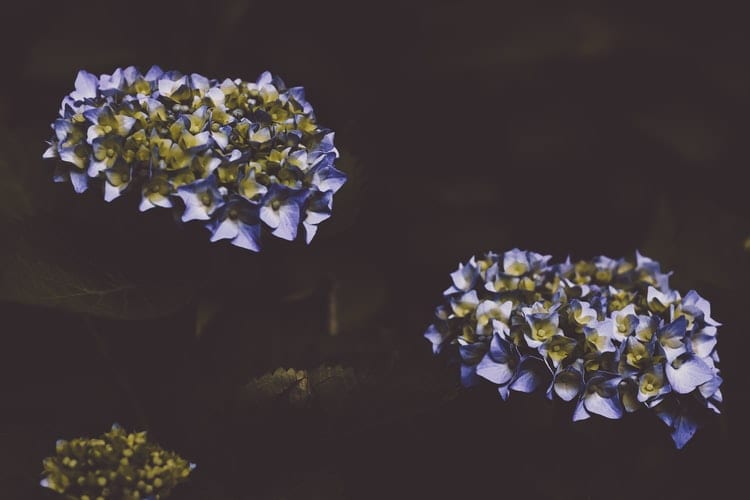
Green Blooms
You may be shocked to know leaves are not the only thing that is green in the kingdom Plantae. In flora, you will find green flowers as well. Although you may think they aren’t as pretty as their colorful brothers and sisters, they have charm to call their own. They represent life and rejuvenation, and rebirth, if you will. In flower arrangements, they are often of an artificial variety to add a green accent, so they are dyed. Nonetheless, there are green flowers that grow naturally in a garden, much like other more colorful ones. Nature’s green bunch range from light greens to deep, rich greens. Most green blooms fall within the brighter green type, think spring colors and chartreuse.
The world of nature is virtually brimming with shades of green – ranging from the dark green spiky needles of pine to Kelly grass. You may not notice at first glance, but there is a lot more green out there than you think. In the midst of all this green, you will discover green flowers that will give all the reds, blues, violets and yellows a run for their money. They pack a visual punch to your garden and any bouquet. Natural showstoppers of the green kind are the Hydrangea Limelight, and certain flowers of the Hellebore species. Plant the ones mentioned below and your friends who witness them will turn a green shade of envy!
It is a well-known fact that most flowers are colored and shaped in a certain way to attract pollinators. Nonetheless, due to genetics, a yellow and blue pigment in the flower could create a green color for particular flowers. Certain chemicals could be blending with these pigments and that may produce the color green as well. Chlorophyll produces the green pigment in leaves. Some experts conclude that the presence of chlorophyll in excessive quantities in a plant may produce green flowers too.
Hellebores
Hellebores are perennial flowers. Also called Lenten Roses, they are beautiful as they look very similar in petal-shape to roses. They are extremely easy to tend to. The green flowers come in a light green hue and face downwards as they grow. Petals are leathery to feel and these act as protection for delicate white stamen in the center. Their blooming period is long, lasting up to 8 weeks. Hellebores need well-drained soil and complete to semi-complete sunlit areas for development. These shouldn’t be planted too deeply in the soil.
Cymbidium Orchids
These beautiful chartreuse colored green flowers with deep red accents are a feast for the eyes. They last very long and add a dramatic look to a garden. They blossom as a winter flower and can have many flowers on a singular stem. This number may climb to thirty. Full sunlight or partially sunny areas are ideal for the plant to grow. Soil needs to be drained completely well. Orchids, as a breed of flowers, are very tedious to care for. Nonetheless, Cymbidiums are easy to tend to by comparison. Still, flowers shouldn’t be exposed to strong mid-day sun and harsh cold.
Irish Bells
The Bells of Ireland or Irish Bells are several green bell-shaped flowers that grow on a single stem. They are thin and papery to touch. They grow to great heights and offer great cover. Consequently, they are suitable for borders and as hedge rows. The Bells of Ireland are green flowers that grow annually. This is a member of the mint family of plants. The Bells of Ireland are actually leaves but resemble Bluebells so much that gardeners call them flowers. There are tiny florets that grow on the tall stem, but you can’t see these. The plant requires moist soil, well-drained in nature. Full sun to partial shade is ideal for the Bells of Ireland to develop. The plants do well in cool weather, but they do not transplant well, so the soil has to be continuously fertilized.
Calla Lilies
These simple green flowers with their trumpet shapes are a favorite with green thumbs. Light green to a lemon yellow in nature, stamen are yellow. They work well as houseplants in containers and are often included in bridal bouquets. Perennials originally, but they can be grown as annuals too. They need full sunlight to partial sunlight to bloom and do well in moist soil, but drained well. Calla lilies are ideally planted after frost has receded and deep into the soil. These plants need water and regular fertilizer treatment. Other than that, they are fairly easy to tend to.
Dahlias
The very subtle green Dahlia needs full sunlight to thrive. The green flowers with their distinctive pointed petals make a statement as cut blooms or planted in a garden. Full flower heads may be large (the size of a dinner plate) or small. Dahlias need moist soil which is well-drained. Soil should not be cold, and the typical ground temperature must be at least 60 degrees.
Pincushion Flowers
Scabiosa or Pincushion flowers are a light, bright green with a center similar looking to that of a pincushion. The center protrudes out of a layer of triangular petals. The flower is a summer bloomer that needs well-drained soil and full sunlight to grow. Withering blooms need removal or the rest of the plant won’t survive.
Gerberas
These daisy-like lime green flowers are easy to grow. They can be tender perennials or be grown as annual flowers. They grow well in a garden and last for a while as cut flowers too.
Gladiolus
Gladiolus are tall and flashy even when they are a neon green color. They are the most classic summer green flowers you can grow in your garden. The electric green Gladiolus pairs well with the red variety and adds striking flair to any space. They can grow up to 6 feet in height. Needing a lot of sun to develop well, the soil must be drained well. These flowers don’t do well in the cold weather at all.
Hydrangea
Hydrangea has tiny green flower clusters in groups on singular stems. Large heads are contained with many tiny flowers. Florets grow in moist and well-drained soil under full or partial sunlight. If you want your hydrangeas to look more vivid, then you need to increase the acidity of the soil.

Hypericum Berries
St. John’s Wort or Hypericum Berries are yellowish-green flowers with large green oval leaves surrounding the flowers. They turn red after a while in some cases. This flower needs soil that is drained well and full sun or partial shade to grow. Roots are hardy and do well in winter weather too. The plant regrows itself in spring, even if the plant dies above the level of the ground.
Carnations
Popular for the array of colors they grow in, green flowers grow in this species too. Full flower heads have serrated petals on very long, thin stems. Moist soil that is drained well is required with full sunlight for carnations to grow. The plant thrives in partial shade too. Flowers that have wilted need to be removed to encourage fresh flowers to grow.
Chrysanthemums
Referred to as “mums”, Chrysanthemums of the green variety add a dash of freshness to a fall garden area. Since they come in many sizes and heights, you can arrange them in patterns that you like and choose colors to complement the bright green flower shade. You can even choose bloom times as these are available in a range of periods. Full sun is required for this hardy flower to grow and flourish. The soil must be just about moist and drained well. Ensuring the proper survival of these means you have to “pinch” them. This is a technique that inspires their growth and entails the removal of the main stem. This compels the plant to grow new stems.
Zinnias
Zinnias resemble daisies in their flower heads, but petals are more pleated than pointed. Stems are slender and grow to various heights. They can grow up to 3 feet. Green flowers display a light subtle green hue and flowers bloom on an annual basis. These flowers are low-maintenance plants and need soil that is drained out well. Full sunlight is ideal for them and old flowers should be taken out to ensure the plant’s sustenance. Zinnias do especially well if fertilized lightly.
Dianthus
Dianthus’ relatives are carnations. This green flower grows as an annual plant. Dianthus is tough and flowers give off a spicy aroma that is hard to miss. Dianthus leaves are narrow and long, but flower heads tend to be bright lime-green spikes. The green variety is called “Sweet William” and sometimes the flower head looks like a soft ball of fuzz. In such cases, the “spikes” are densely packed on the head of the flower. A perennial, it is good for gardens and window boxes alike.
Daylilies
Daylilies are green flowers that are delicate and dainty. Nonetheless, they are an invasive species of plant and will spread in the blink of an eye! Flowerheads look like trumpets in very mildly-hued green, and stems, long and narrow, are leafless. Full and partial sunlight is good for these flowers that look great as a border or against a wall. The soil must be drained very well and wilted flowers must be removed to extend bloom time. Each individual flower may last only up to a day or two, but new flowers will replace these.
